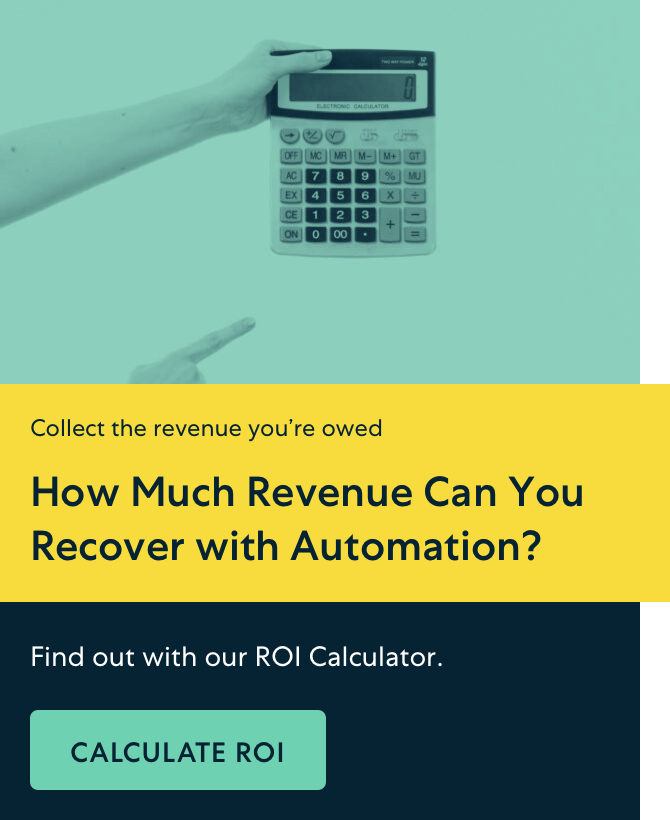There’s no way to sugarcoat it: sustainably scaling your SaaS business is hard. Incredibly hard, most of the time. Only 28% of SaaS companies studied by McKinsey ever reached $100 million in revenue, and 85% of companies that were “supergrowers” couldn’t keep up their outstanding growth rates. Tough pill to swallow, right?
It goes without saying that you need to keep a close eye on your SaaS business health and monitor your metrics so you’ll have a deeper understanding of how your company’s doing to ensure profitability. With a plethora of abbreviated metrics brands can track—from churn MRR to to CAC to CLV—it can feel overwhelming knowing where to start in order to best gauge your company’s financial health. We’ve already spoken before about the top 10 SaaS metrics to track and 4 MRR Types you should be aware of, but in today’s article, we’re going to do a deep dive into one metric you should be tracking, and that’s NRR.
If you’re trying to better the customer experience, improve your retention rates, and scale your business, then you need to be looking into net revenue retention, or NRR. If you have no idea what NRR is, why it matters for customer acquisition, or how to even put it into practice, look no further. In this blog, we’ll cover everything you need to know about net revenue retention, and then some.
TL;DR
- Gross revenue retention is a metric that shows you the percentage of your recurring revenue over a certain period of time, but doesn’t factor in upselling, cross-selling, or any other sort of additional revenue related to expansion. Meanwhile, NRR not only looks at your churn revenue, but also expansion revenue. In other words, it looks at both the negative and positive impacts on your recurring revenue in a certain period.
- NRR can demonstrate the value you provide to your customer, is a metric that investors care about as it can help determine the growth potential of companies, and can function as an early warning sign that your SaaS company needs to improve the customer experience and reduce churn.
- However, if you look at NRR in a bubble, this metric doesn’t tell the whole story. It may hide potentially critical issues like low new customer acquisition or high customer churn. That’s why it’s important to track all metrics holistically and balance your sources of revenue growth.
What is Net Revenue Retention (NRR)?
First, let’s start by defining a similar metric that some people confuse for NRR. Gross revenue retention (or GRR), is a metric that shows you the percentage of your recurring revenue over a certain period of time, but doesn’t factor in upselling, cross-selling, or any other sort of additional revenue related to expansion.
You can calculate it using this formula:
GRR = (Total revenue – Total churn) / Total revenue x 100%
Do note that your gross retention rate can never be higher than 100% (which would mean you had zero churn during that period).
The limitation of GRR is that it essentially defines success as looking exclusively at whether or not you retain customers. If you want to have a deeper understanding on how your SaaS company farms new customers, NRR (sometimes called net dollar retention) is the metric you’d need, since it looks not only at your churn revenue, but also expansion revenue. In other words, it looks at both the negative and positive impacts on your recurring revenue in a certain period.
How Do You Calculate NRR?
To calculate your NRR, use this formula:
Net revenue retention = (Net recurring revenue – Total churn + Expansion revenue ) / Base recurring revenue x 100%
Say you started the month with $200,000 in recurring revenue, and $220,000 from those same customers at the end of the month. Now, if you lost $10,000 in MRR because of churn and downgrades, but earned $12,000 from upgrades, you could calculate your net revenue retention as such:
NRR= ($220,000 – $10,000 + $12,000) / $200,000 x 100
Which would come out to 111%.
Unlike GRR, your total figure for NRR can be a percentage higher than 100%, since it’s looking at both customer retention and value growth within your company. That’s why companies with a high NRR are often given a higher valuation, as they’re more likely to have a better retention than SaaS companies—meaning you’re likely to see SaaS organizations with a great NRR share it publicly.
As a general rule of thumb, a great net revenue retention rate is anything over 110%. That signals that you’re growing your business with a steady customer base and minimal churn. If your NRR is under 100%, it’s not necessarily a harbinger of doom (rapid-growth companies could fall in this category, if you’re onboarding customers faster than you’re losing current customers.)
Still, consider looking at your churn rate or customer lifetime value to better understand why your NRR is where it’s at. It could be because of a sudden customer drop-off, or it could mean you don’t have enough expansion revenue from upselling and cross-selling, which can be solved with some palm grease. However, if it’s under 80%, you need to up your customer retention game.
Why Should You Care about NRR?
It can demonstrate the value you provide to your customers
Subscription-based companies have to not only retain, but also expand their customer base to remain profitable and have sustainable revenue growth. One of the best metrics to measure the value your brand offers customers is NRR, as a high NRR can suggest that your organization is in a financially strong position. Since the growth from expansion revenue outpaces churn, you can reasonably assume that your organization is financially stable.
It’s a metric investors care about
Today, NRR is a metric that customer success team leads have to know about. That’s because the positive effect it can have on organizations has been clearly documented, like SaaS Capital noted in their 2023 Growth Benchmarks for Private SaaS Companies, saying: “Increasing Net Revenue Retention (NRR) from the 90% to 100% range to the 100% to 110% range improves growth rate by 9 percentage points. Companies with the highest NRR report median growth that is double the population median.” While it’s not the only metric that investors will look into (other key metrics include churn rate and LTV), NRR is a metric that is increasingly used to determine the growth potential of companies.
It functions as an early warning sign
If your NRR is on the lower side, it could be a signal that your SaaS organization needs to step up the customer experience, since NRR essentially measures your retention levels. It’s a sign that your monthly recurring revenue is vanishing faster than it’s being created. Some ways to improve your net revenue retention could be implementing proactive churn prevention with real-time analytics, flexible subscription models, incentives like referral programs, and dynamic account management. Whatever approach you take, make sure you set clear success benchmarks based on the data you’re being fed for a data-driven approach.
Why a High Net Revenue Retention (NRR) May Not Be a Good Thing for Your SaaS Business
OK, so we’ve covered why you shouldn’t ignore your NRR, but before you jet off, it’s important to realize that it’s not the full picture. In fact, you may be surprised to learn that it might not always be a good thing if your NRR is through the roof. Confused?
Let’s say your SaaS business has notched a 150% NRR for a few months in a row. You’re knocking it out of the park and you can now sit back and relax, right?
Well, not so fast—it’s not always in the best interest of your SaaS business to focus solely on a high NRR figure.
Your 150% NRR can lead to complacency and a false sense of security, especially if you aren’t keeping a close eye on other growth and retention metrics.
For example, unless you also check your business’s other metrics, you might not realize your new customer growth is only 25%. That’s not necessarily a death knell for your SaaS business, but it can present future challenges in terms of growth and the sustainability of your business.
High NRR can mask other issues in your SaaS business model
If you only look at your NRR, you may think your SaaS business is on track with excellent growth and a secure future.
But in a bubble, NRR doesn’t always tell the whole story.
While you may be fantasizing about the compounding business growth that’s surely coming your way thanks to your high NRR, some potentially critical issues could be lurking in the shadows.
Issue #1: Low new customer acquisition
In order to create a self-sustaining engine for future growth, it’s important to earn revenue from both existing customers as well as from new clients. A high NRR figure doesn’t take into account specifically where your revenue growth is coming from, so your SaaS business may be at 150% NRR but only 20% new logo growth.
Those figures mean your sales team is likely putting most of their effort into upselling existing clients with more products or account expansion. These are often easier sales targets than net new customers and should be focused on.
But, too low a rate of new customer acquisition can hinder future growth.
When the sales team focuses too heavily on selling to existing customers, they may effectively ‘over-harvest’ that revenue stream to the point where:
- there is a lower potential for upselling and cross-selling in the future, or
- customers no longer feel they’re getting enough value for their money.
This may lead to another issue , which is:
Issue #2: High customer churn
When customer satisfaction wanes, customers don’t feel like they’re getting their money’s worth, becoming more likely to churn. If enough customers churn, it can cause your SaaS business to become a leaky bucket. This occurs when a high churn rate chokes off the growth rate—existing customers are leaving at the same or higher rate than new customers are being acquired.
Another potential churn-related pitfall is when your SaaS business reaches a growth ceiling, which is where your customer base has grown substantially to the point where your churn, though not necessarily a concerningly high percentage, ultimately cancels out the growth of new customers. This can occur when your new client acquisition rate has not kept up proportionally with the size of your customer base.
Again, since NRR takes into account your expansion revenue as well as your churn revenue, the final figure can be greater than 100%. It’s a good metric of growth, while GRR is a better measure of customer retention. Therefore, it may be difficult to accurately assess your churn and growth rates by looking solely at your SaaS business’s NRR.
How to avoid being blindsided by these masked issues in the SaaS industry
Fortunately, there are a few ways you can avoid falling into a high-NRR-based complacency trap:
Track all metrics holistically
First and foremost, it’s crucial to take a holistic view of all of your SaaS business’s metrics. These should include both NRR and GRR, but also monthly recurring revenue (MRR), annual contract value (ACV), LTV, and customer acquisition costs (CAC). And don’t forget to look at customer retention and churn rates as often as you check your NRR.
Especially early on in an effort to scale a SaaS business, it can be tempting to focus only on customer acquisition and attaining a glamorous 100%+ NRR. However, it’s equally important to ensure that your customers stick around and your GRR is high and stable.
The median GRR for SaaS businesses less than three years old is around 99%, although it commonly drops to around 90% after about three years. So, if your SaaS business is relatively new, it’s important to ensure your GRR is meeting these benchmarks before you worry too much about NRR.
A high GRR shows you have a subscription product that’s useful and valuable to customers over the long term, while a high NRR shows you have strong growth potential. Investors know this, so if you seek funding, plan to have both your GRR and your NRR inspected.
As SaaS expert Dave Kellogg outlines, “I think the thing that most often goes wrong with SaaS metrics is when they’re incoherent with the story. No metric is inherently evil or good, but it has to match the story. If you’re going to tell a big land-and-expand story, and you’ve got multiple products and cross-sell and additions and price increases, I better see a nice NRR. If you have none of those things, well, first I’m going to wonder why you chose that story.”
So, the moral of the story: keep an eye on all your KPIs and metrics holistically—watching them individually as well as noticing how they correlate with each other. And, keep in mind that different metrics can be more impactful depending on where you are in the lifecycle of your business, the type of SaaS products or services you offer, and your business goals.
Balance sources of revenue growth
Next, aim to split your total revenue growth 50/50 between new logo growth and expansion revenue from existing customers. In the SaaS industry, if your overall revenue growth relies too heavily on expansion revenue, you run the risk of encountering a leaky bucket situation or hitting a growth ceiling.
Growth ceilings can be deadly for SaaS businesses, and there are only three ways to break through. You could:
- reduce churn/increase retention,
- acquire more new customers, or
- increase average revenue per user (ARPU).
Ensuring your revenue growth is balanced between new and existing customers from the get-go helps ensure that you won’t have to take emergency measures to save your business later on.
Segment your NRR and other metrics
Finally, segment your NRR and retention rates by ARPU and acquisition date to help reveal trends that may not otherwise be obvious. Doing so can help show whether small, mid-size, or enterprise customers are more likely to churn, as well as when that is most likely to happen. Then you can formulate a plan to increase retention rates for the customers who are most prone to churning.
This type of metric segmenting can also help you identify if there are certain members of your sales and customer service teams who may be underperforming. If so, you can take steps to improve performance and target specific problem areas.
But how?
A modern, comprehensive subscription management platform can help
A modern subscription management platform is more than just a tool to handle billing—it’s also a valuable data mine that increases the visibility of both NRR and non-NRR metrics.
This type of full-scale SaaS solution can also:
- Provide real-time customer data and reports
- Integrate seamlessly with your existing tech stack
- Generate accurate forecasts
- Virtually eliminate manual billing errors
- Reduce recurring revenue leaks
- Assist with revenue recognition compliance
Having all of this information readily available allows you to keep your finger on the pulse of your software as a service business and make data-driven decisions. In turn, this can help you scale effectively, meet your GRR and NRR goals, and win over investors.
Contact us today to schedule a demo with Stax Bill.
Quick FAQs about Net Revenue Retention
Q: What is Net Revenue Retention (NRR)?
Net Revenue Retention (NRR) is a crucial metric for SaaS businesses that measures the percentage of revenue retained from existing customers over a specific period. It factors in churn revenue and expansion revenue, providing insights into both customer retention and growth from upselling or cross-selling.
Q: Why is NRR important for SaaS businesses?
NRR is important because it reflects a company’s ability to retain and grow revenue from its current customer base. A high NRR indicates strong customer loyalty and effective upselling strategies, which can lead to a higher company valuation and attract potential investors.
Q: How is NRR different from Gross Revenue Retention (GRR)?
The key difference between NRR and GRR is that GRR only measures the percentage of recurring revenue retained from existing customers without considering expansion revenue. NRR, on the other hand, includes both churn and expansion revenue, thus offering a more comprehensive view of a company’s revenue dynamics.
Q: How can a SaaS company calculate its NRR?
To calculate Net Revenue Retention (NRR), use the formula: (Beginning MRR – Churned MRR – Downgrade MRR + Expansion MRR) / Beginning MRR; essentially, take the starting recurring revenue, subtract lost revenue from churned and downgraded customers, add any gained revenue from upgrades and expansions, then divide by the starting recurring revenue. Then you have the percentage representing NRR. This formula helps determine the total impact of customer retention and expansion on revenue.
Q: What does a high NRR indicate about a company?
A high NRR (above 110%) suggests that a company is successfully growing its revenue from existing customers, indicating a healthy balance of customer satisfaction and effective upselling.
Q: What strategies can improve NRR?
Companies can improve NRR by implementing proactive churn prevention techniques, offering flexible subscription models, incentivizing upgrades with referral programs, and enhancing customer engagement through personalized account management.
Q: Can focusing too much on NRR be detrimental?
Yes, focusing solely on NRR can lead to complacency and overlook other essential metrics like new customer acquisition. A balanced approach is necessary to ensure sustainable growth and prevent potential pitfalls like a “leaky bucket” scenario.
Q: Is a low NRR always a cause for concern?
Not necessarily. A low NRR might not be alarming if the company is in a rapid growth phase with a high rate of new customer acquisition. However, if NRR falls below 80%, it may indicate significant issues with customer retention or insufficient expansion revenue.
Q: How does NRR affect investor perception?
Investors often view NRR as a key indicator of a company’s growth potential and financial stability. A strong NRR can enhance investor confidence, as it suggests effective customer retention and revenue expansion strategies.






